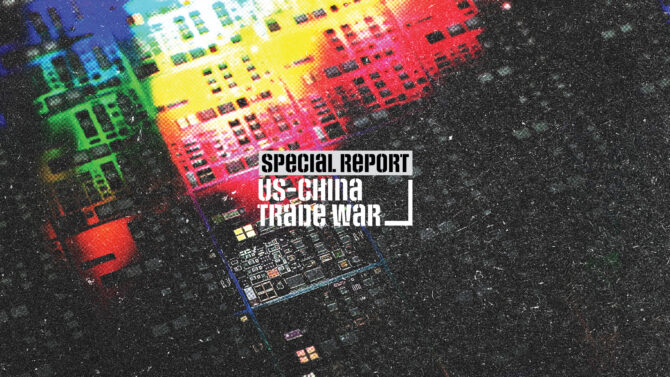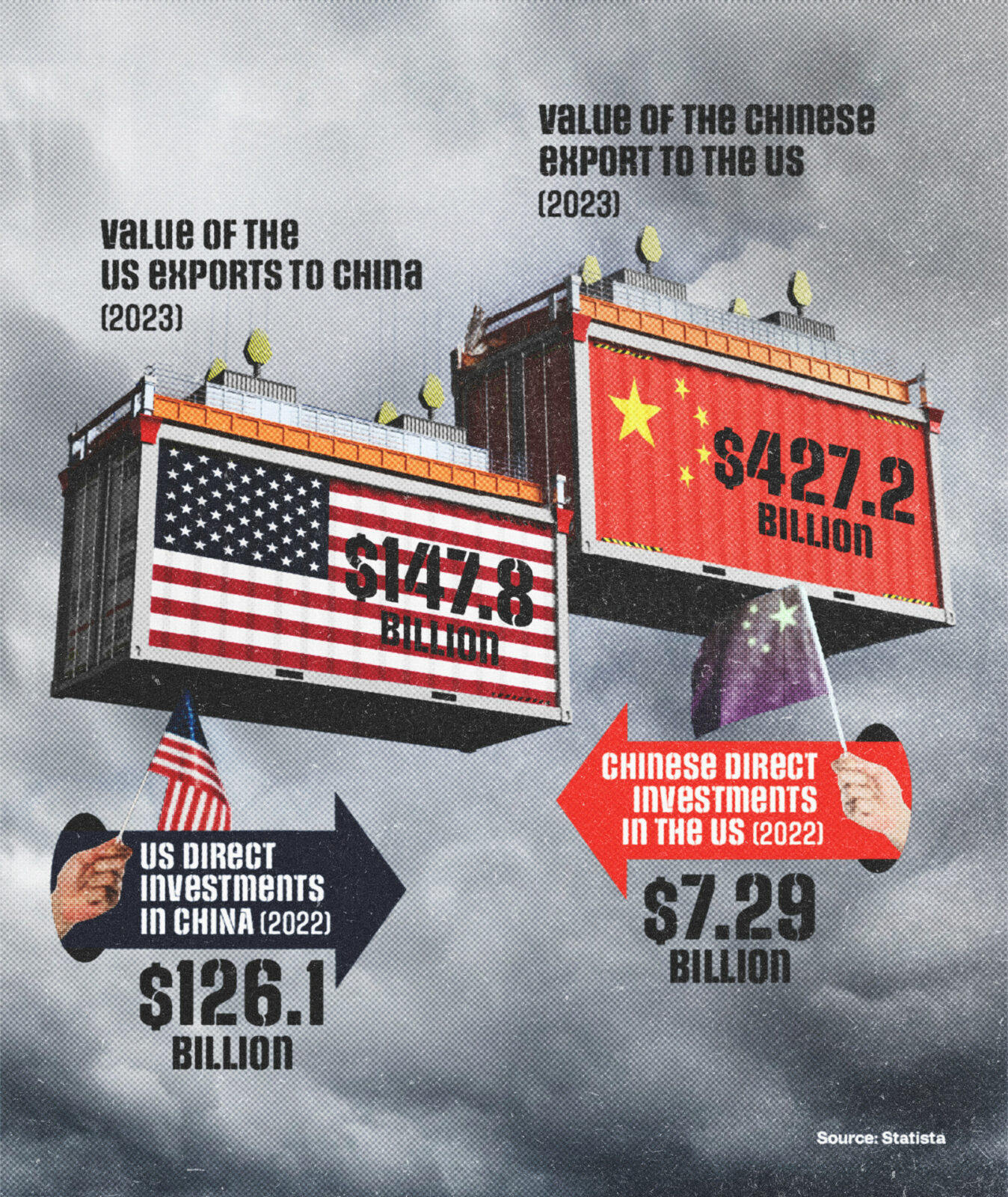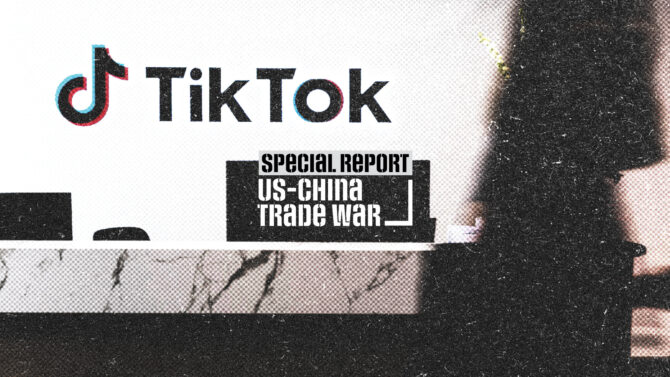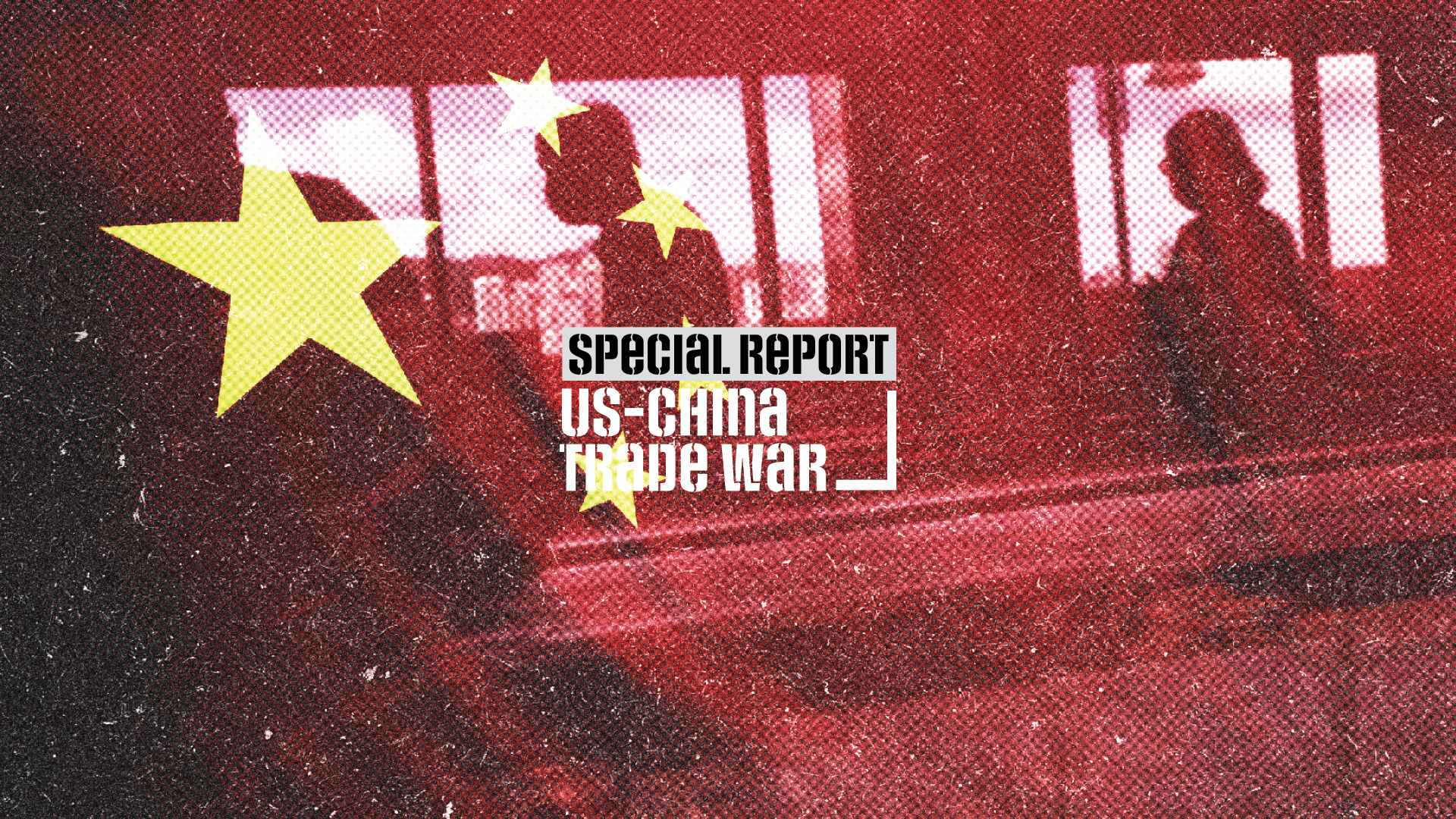Western media often portrays the trade conflict between the United States and China from an American perspective. However, how are these same events depicted in Beijing? Dr. Ian Chong, Associate Professor of Political Science at the National University of Singapore, speaks to iMEdD.
US-China: The silent war on microchips

Microchips are at the core of global industry, underpinning technological innovations such as AI, factory automation, electric cars, and advanced weapon systems. Simultaneously, they lie at the heart of the US-China trade conflict—a “Cold War” dispute with significant global implications.
“The U.S. bullying trading tactics have causedan increase in costs for international companies, a decrease in their competitiveness, and harm the interests of consumers,” Xinhua Net, the multilingual version of the Chinese news agency, wrote in reference to the trade war between Washington and Beijing.
The latest episode of the conflict, which started in 2018, involved the US government’s decision to increase tariffs on products such as microchips and especially electric vehicles. “It’s a pretty standard negotiating tactic, right? You apply pressure to show you can cause harm and make the other side back down,” Dr Ian Chong, associate professor of political science at the National University of Singapore, tells iMEdD. This kind of pressure, among other things, can also be applied through writing.
“You strike, we endure”
Chinese media report that the trade war is mainly affecting the United States and that the US governments have not, so far, achieved as much as they had hoped in 2018. “Even if one agrees with Trump’s logic, his policy does not work,” wrote Xinhua Net in March 2024 in a review article on the two countries’ economic dispute.
In a related article, China’s ecns.cn reported in June that “despite facing a ‘significant performance downturn’ last year, Chinese companies operating in the United States expect rising revenue trends in the long term.”
Chinese media are highlighting the difficulties of the US economy while showcasing favourable economic numbers from the People’s Republic, despite a recent Stanford University study indicating that the export potential of both countries has been affected by the trade war.

“The PRC side is trying to channel confidence into its economy to attract investors and partners,” Dr Chong tells iMEdD. “It hasn’t really talked about the slowdown in growth. It’s handling things the same way it talks about its economy: focusing on a bright future and promising that it can maintain its past trajectory. But rhetoric and numbers don’t always align.”
TikTok: US vs China and Trump in the middle

Why did Joe Biden call for a ban on a social media platform? To what extent is the national security of the US threatened by TikTok, and what would the implications of Donald Trump’s reelection be? What is the response of the Chinese company that owns TikTok to iMEdD’s inquiry?
China vs The world
In this intense climate of rivalry, Dr. Chong explains that the official PRC narrative views US governments’ actions as part of a broader effort to obstruct China’s economic rise. “Sometimes (the PRC) frames this as a cultural rivalry between the West and the East, though these two terms are very vague and amorphous. At other times, the focus is on the notion that America and its allies are hegemonic, while the PRC is anti-hegemonic.”
On July 4, 2024, Ursula von der Leyen announced new tariffs on imports of cheap electric cars, steel and cheap solar and wind technology, bringing the European Union into this ongoing economic dispute. “Europe will not waver from making tough decisions needed to protect its economy and its security,” the European Commission chief said.
The recent move supports Dr. Chong’s observations. “This is not just a US issue. If you look at Europe, some of the dynamics are very similar. Who is benefiting from globalisation, and who is not?” he notes.
Chinese media have criticised the European tariffs, publishing opinion pieces that oppose the European Union’s decisions. They emphasise the state view that “China hopes the EU will […] avoid measures that could harm mutually beneficial cooperation and shared development of the automobile industries in both regions.”
At the same time, the European side continues to echo the rhetoric of the United States. In her speech, von der Leyen criticised the unfair competition that China is bringing to the economic arena, an argument that US administrations have used to justify the trade war.
For China, however, state protection practices are seen as normal: “The PRC argues that it does not fit into the market economy mold and does not need to open up (its trade activities) in the same way. They have long maintained a protected market,” explains Dr. Chong.
“Everyone claims that the others are not playing fair. But that’s just how these things work. The thing about trade is that there are winners and losers, and no one wants to be the loser,” he adds.
Good settlements make good friends
In 2016, before the trade war began, there appeared to be an effort to foster a positive climate between the two sides. A statement from the PRC’s Ministry of Foreign Affairs at the time concluded: “Looking into the future, China-US common interests will only increase but not reduce, and the fields where the two countries should and can cooperate will only widen but not narrow down. Therefore, the two sides should not only think about ‘to make the opposite side do what’ but also think more of ‘what can we do together,’ so as to make the cake of common interests bigger.”
However, it’s hard for observers to ignore the long-standing trade relationship between the two countries and how closely their economies are intertwined in practice. “Tariffs are very high, which has reduced the trade deficit between the US and the PRC, but the two economies still trade with each other. And they also engage in indirect trade. Some of the indirect trade has increased as goods pass through third countries or are produced there,” Dr. Chong notes.
For China, the trade war is not as central a topic of discussion as it is in the United States. Although economic problems are not absent from Chinese daily life, the United States is rarely blamed, except in specific high-tech sectors that are most affected.
As Dr. Chong explains and Chinese publications illustrate, maintaining a positive image is crucial for the Beijing government—both internationally and domestically. This image projects support for justice, adherence to rules and institutions, and a connection to the greatness of China’s past.
“A trade war is a situation where virtually everyone loses,” Dr. Chong notes. “The question is who loses the most and retreats first. That’s the whole point of a trade war – it’s about whether you can get the other side to capitulate because you’re the one bearing the greatest cost.”
As part of its research on the trade war from the Chinese perspective, iMEdD attempted to contact former advisors and academics in the People’s Republic of China, but received no response by the time of writing.
Read all articles and analyses of the Special Report: “US-China Trade War” here.
